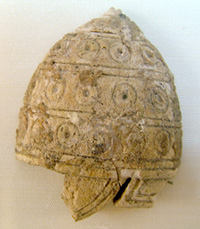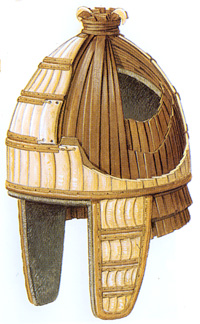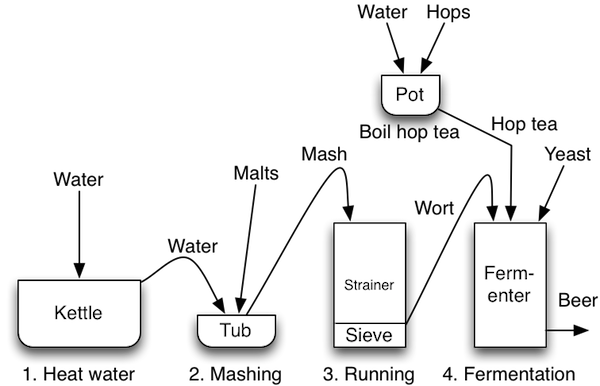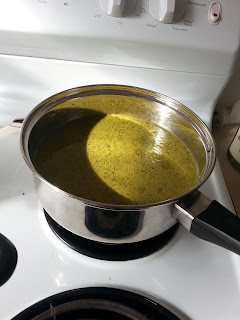Recently I read
a very interesting article about the Great Depression and why it took so long for the US economy to recover, and it made me think about the collapse of Mycenaean civilization at the end of the Bronze Age. I've often thought there must be an economic dimension to the Late Bronze Age collapse, and reading this article got me wondering how much of that might have been due to the way Mycenaean governments managed their economies.
 |
| Map of Mycenaean and other civilizations in the 14th century BCE, via Wikimedia Commons |
No one knows exactly what destroyed the Mycenaean city-states, but it appears that
drought and famine were contributing factors. Probably there were a number of factors involved, but for now back to the Great Depression:
When I was in school I was told the Great Depression was largely caused by laissez-faire economics, but the article I linked to provides a different perspective. The author says the initial stock market crash was the inevitable result of federal monetary policy, but things could have been back to normal in a couple of years. That had been the case with previous recessions. Instead the Depression lasted twelve years because of a series of government interventions that were intended to stimulate the economy, but actually did more harm than good. One example is that the US government introduced high tariffs on foreign goods to make people buy American made and encourage American manufacturing. But countries that could no longer sell their products in America returned the favour by not buying American goods, and American exporters went bankrupt. Farmers in particular relied on access to overseas markets and the agricultural sector collapsed.
Mycenaean government policy did not cause the Late Bronze Age collapse; the disaster affected the entire Aegean and Anatolia. Hittite civilisation was also wiped out, and though Egypt survived she was never the same again. However, I suggest the extreme centralization of the Mycenaean economy and its dependence on state administration may be one reason why it was hit so hard, and didn't recover once the region started to stabilize again.
How the Mycenaean economy worked
Mycenaean city-states were, to put it mildly, statist. They revolved around large, centralized bureaucracies that had absolute control over production and trade. The Mycenaean city-state was primarily an economic entity. Their wealth was built on trade, and the production of commodities for export defined their way of life. This is why Mycenaean art and artifacts - and writing - stopped being produced once the city-states collapsed. These were state controlled industries and without the state to support them the industries collapsed too.
The Mycenaeans had what is known as a
redistribution economy. Income, in the form of produce, livestock, and other resources, was collected by the administrative centers, which used the income to support a huge workforce of textile manufacturers, metal workers, perfume makers, furniture makers, potters, and other craftspeople. The numbers of people involved really were very large; the city of Pylos had
nearly 400 bronze smiths and 550 textile workers, while Knossos had 900 textile workers. Olive oil, wine, and probably timber were also exported.
Early archaeologists tended to think of Mycenaean trade as being mainly exchanges of prestige items between Mycenaean rulers and the rulers of other states with whom they interacted, but the evidence available now shows very large scale production of commodities that weren't always prestige items, and appear to have been made specifically for export. Pottery, for instance, was not a luxury item suitable for diplomatic exchanges, but was exported in large quantities. It may indicate the export of products like wine or oil that were stored in the pottery vessels.
This was not a cash economy and workers were paid in food rations, which wasn't unusual in the ancient world. Some of the workers were slaves, but not all of them. Some workers appear to have been farmers who were self-sufficient to some degree. Citizens were required to provide the government with both produce and labour. We don't know whether working in state industries was seen as a good opportunity, but it was almost certainly not optional.
To what extent did workers rely on the state?
In some cases it's possible to make an educated guess about how much time people spent working for the state, because they had a quota system. We know, for instance, that each textile worker listed in the Knossos archives was expected to produce one unit of
pa-we-a type cloth, or one unit of
te-pa type cloth, and we know how much wool was used to make each unit. In a paper for the 9th International Aegean Conference, Eva Andersson and Marie-Louise Nosch calculated it would take a specialist worker 175 days to spin the wool required for a unit of
pa-we-a type cloth. If that calculation is accurate it represents a lot of work, and let's not forget the opportunity cost. The time each woman spent making textiles for export was time she couldn't spend producing clothing and food for her own family, which she would also have had to do.
From an economic perspective the trouble with a quota system is that it isn't responsive to market demands, and creates perverse incentives. Producers concentrate on filling their quotas, regardless of whether they're making things buyers want. If you cannot find a market for those goods, this tends to create a problem. It was certainly a problem for the
Soviet economy* and may well have become a problem for the Mycenaeans too.
At the end of the Bronze Age widespread famine and social instability disrupted international commerce, and it is possible the market for Mycenaean manufactured products dried up. As we've seen, the Knossos tablets suggest that textile workers, and maybe other workers too, were highly reliant on the state and its trading activities for their survival. You can imagine what would have happened if large numbers of people found themselves out of work, or not getting paid for their work. They couldn't find other jobs, because there were no other employers. Keep in mind the fact that most of the Mycenaean palaces were not simply abandoned, they were violently destroyed.
The state as a monopoly
One of the ways a Mycenaean state controlled its means of production was by controlling access to markets and to raw materials. In many cases the raw materials needed to manufacture Mycenaean commodities were acquired through trade, as payment for manufactured goods or
primary products. Trading was done by the governments, and as far as I know there's no evidence that private citizens worked as merchants. Of course, it is important to recognise that absence of evidence isn't evidence of absence. Lack of evidence does not prove there were no economic activities taking place outside the central administration's control, but given the lack of evidence for free enterprise you have to wonder whether governments were actively discouraging it with a view to maintaining their monopolies. Because the state controlled access to resources, setting up large-scale free enterprise may have been quite difficult anyway.
All this meant that the economy was more than reliant on the government; it was functionally inseparable from the government. Once the administrative center was destroyed, the infrastructure that Mycenaean industries relied on was no longer there. By that I mean both physical infrastructure, and people with the skills and knowledge necessary to manufacture commodities and organize large-scale economic activity. Anything that affected the city-state overall affected everybody and every industry the state was involved with, all at the same time.
Conclusions
The Mycenaean way of life was very different from ours. Government, economy, industry, and even religion were all rolled into one with very little functional distinction between them. The system may have originated as a logical way to support large-scale industry by creating economies of scale, and it seems to have worked fairly well when times were good. The grave goods of elite Mycenaeans show how affluent they were. However, this extremely centralized production model may have become a problem. If the central bureaucracy ceased to function for any reason, the state's entire manufacturing and export industry also ceased to function. This may be why the Mycenaean city-states didn't recover from the famine and social instability that marked the end of the Bronze Age.
It's also possible that the way Mycenaeans industries were managed left them vulnerable to changes in the wider Aegean and Near Eastern markets. Mycenaean industries weren't based on demand and profit, they were based on quotas set by the state, and such systems tend not to be very flexible. Bureaucracies never cope well with change.
Of course, this is all just me speculating, but I think it's both important and interesting to consider ancient civilizations in terms of economic principles.
*
However, I would be surprised if Mycenaean industries experienced the same quality control issues for which Soviet products were notorious. Mycenaean industries seem to have been quite committed to maintaining quality, and since some of the things they were making were luxury goods this was probably necessary.
Sources
Andersson, A and Nosch, M. 2003. "Investigating Mycenaean Textiles with Help from Scandinavian Experimental Archaeology", published in
Metron.
Chadwick, J. 1976.
The Mycenaean World. Cambridge: Cambridge University Press.
Chadwick, J.
1958.
The Decipherment of Linear B. Second edition 1990. Cambridge: Cambridge University Press. Some of the information in Chadwick's books is a bit dated now, but they're still good books and well worth reading.
Cline, Eric H., ed. 2012.
The Oxford Handbook of the Bronze Age Aegean. Oxford: Oxford University Press.
Kelder, J. M. 2010. "The Kingdom of Mycenae: A Great Kingdom in the Late Bronze Age Aegean". Bethesda: CDL Press.
Van Wijngaarden, G. J. 2002.
Use and Appreciation of Mycenaean Pottery in the Levant, Cyprus and Italy (ca. 1600-1200 BC). Amsterdam: Amsterdam University Press.










































